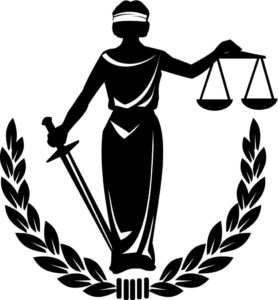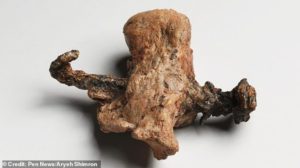Chain of Custody – Was the Body of Jesus Stolen?

Oldest of the arguments against the Resurrection is the charge that the crucified body of Jesus of Nazareth was stolen from the tomb. To steal the body, a Roman/Jewish chain of custody over his body would make the claim difficult to overcome.
Procurator Pilate granted the mutilated body of Jesus to Joseph of Arimathea, a prominent member of the Jewish council. He was joined by Nicodemus, another prominent member of the Jewish Council. Both took the body to Joseph’s own unused tomb and quickly prepared the body for burial.
Witnessing the scene were women from Galilee, two identified by name, Mary the mother of Joseph (aka Jose) and Mary Magdalene.[2] The women watched Joseph roll a stone in front of the tomb entrance – confirmation by the two Jewish Council members that Jesus was indeed dead and buried.
What did or didn’t happen between the time Jesus was laid in the tomb just before dusk, Nissan 15, until Sunday is limited. Nonetheless, Matthew and Mark reported some activities that occurred.
Those who most certainly would not have wanted to be corroborating witnesses of a Resurrection became just that. After Jesus was buried late afternoon of the prior day, the next day some of the leaders of the priests and Pharisees declared to the Roman government that the body of Jesus was still in the tomb that Sabbath morning, Nissan 16:
MT 27:62-64 The next day (which is after the day of preparation) the chief priests and the Pharisees assembled before Pilate and said, “Sir, we remember that while that deceiver was still alive he said, ‘After three days I will rise again.’ So give orders to secure the tomb until the third day. Otherwise his disciples may come and steal his body and say to the people, ‘He has been raised from the dead,’ and the last deception will be worse than the first.”(NET)
Top level Jewish leadership had approached Rome’s jurisdictional authority of Judea – Pilate – with their concern of a false fulfillment of Jesus’ own 3-day Resurrection prophecy. As a Roman Procurator whose governing capacity included serving as a judge, Pilate had to weigh the truthfulness of their claim as well as the potential political consequences.
First was the declaration that the corpse of Jesus was lying in a tomb and the Jewish leader’s concern that it could be stolen. Rome otherwise had little regard for crucified victims, according to Josephus; however, Rome did allow the Jews’ custom to bury their crucified dead:[3]
“Nay, they proceeded to that degree of impiety, as to cast away their dead bodies without burial, although the Jews used to take so much care of the burial of men, that they took down those that were condemned and crucified, and buried them before the going down of the sun.” – Josephus, Wars [4]
Pilate most likely considered other factors, too, such as the validity of the testimony of the Jewish leaders. False witness was a capital offense making it highly unlikely they were lying to him. If the body was stolen and later found, it would complicate matters even worse. Weighing the credibility and motive of their testimony, then concluding the body of Jesus was still in the tomb, an irritated Pilate issued a terse decision:
MT 27:65-66 “Pilate said to them, “You have a guard; go, make it as secure as you know how.” And they went and made the grave secure, and along with the guard they set a seal on the stone.”(NASB)
Pilate granted permission through what was, in essence, a Roman court order to secure the body the best way they knew how. This included stationing of a koustodia, a company of guards, at the tomb. Together, the Jewish leadership and the koustodia placed a seal on the tomb as an additional security measure.
Josephus described a “seal” process involving a combined Jewish-Roman military style squad led by a “Roman captain of the temple guards.” The Roman captain, who resided in the Tower of Antonia adjacent to the Temple, was assigned to a contingent of armed Temple guards.[6]
It was the Roman captain’s responsibility to match his seal ring with a matching seal ring possessed by the Temple leadership to verify the integrity of the seal, in this case, to secure the Chief Priest’s vestments worn at the Jewish festal sacrifices. This Roman-Jewish seal process was temporarily in place only from the death of King Herod until Vitellius became president of Syria in 35 AD – the period of years virtually coinciding with the lifetime of Jesus of Nazareth.[7]
A similar type of seal and guard process appeared to be utilized at the tomb. The koustodia were accountable to Pilate as evidenced after the resurrection event on Sunday morning when some the guards reportedly ran to the chief priests instead of Pilate. Additionally, Jewish leaders promised the guards they would handle Pilate if their adverse behavior became an issue.
Placed at the scene of the tomb holding the body of Jesus of Nazareth are the contingent of chief priests and Pharisees (possibly including stealth followers of Jesus, Joseph and Nicodemus) to witness the seal being placed on the tomb and the posting of the koustodia. Jewish leaders left with full confidence the sealed tomb was secure alleviating their anxiety that someone might steal the body of Jesus.[8]
Archenemies of Jesus obtained a legally established Roman-Jewish chain of custody over the body of Jesus that remained unbroken until Sunday morning. At dawn that Sunday morning, incredible events occurred at the tomb while the koustodia were still stationed at their post with the seal intact.
Considering there was a legally established Roman-Jewish chain of custody in place, what is the possibility his body was stolen?
Updated March 12, 2024.
This work is licensed under a Creative Commons Attribution-NonCommercial-NoDerivatives 4.0 International License.
REFERENCES:
NET = NetBible translation; NASB = New American Standard Bible translation
Gospel references: Matthew 27-28, Mark 15, Luke 23, John 19.
[1] Pearce, Jonathan MS. “Matthew and the guards at the tomb.” 2012. <http://www.debunking-christianity.com/2012/06/matthew-and-guards-at-tomb.html rel=”nofollow”> “Gospel Disproof #38: The guards at the tomb.” FreeThoughtBlogs.com. 2014. <http://freethoughtblogs.com/alethianworldview/2012/02/27/gospel-disproof-38-the-guards-at-the-tomb rel=”nofollow”> Chain. Business2Community. image. 2015. <https://www.business2community.com/wp-content/uploads/2015/04/Chain-red-link.jpg-300×200.jpg>
[2] Edersheim, Alfred. The Life and Times of Jesus the Messiah. Book V. 1883. Philogos.org. n.d. <http://philologos.org/__eb-lat/default.htm>
[3] Josephus, Flavius. Antiquities of the Jews. Book IV, Chapter VIII;
Google Books. n.d. <http://books.google.com/books?id=e0dAAAAAMAAJ&printsec=frontcover&source=gbs_ge_summary_r&cad=0#v=onepage&q&f=false>
[4] Josephus. Wars. Book IV, Chapter V.
[5] Jahnige, Joan. “The Roman Legal System.” KET Distance Learning. 2017. http://www.dl.ket.org/latin2/mores/legallatin/legal01.htm> Adams, John Paul. “The Twelve Tables.” 2009. California State University – Northridge. <https://www.csun.edu/~hcfll004/12tables.html>
[6] Josephus. Antiquities. Book XV, Chapter XI; Book XX, Chapter I. Wars. Book II, Chapter XVII; Book V, Chapter VI.
[7] Josephus. Antiquities. Book XV, Chapter XI; Book XX, Chapter I. Smith William. Dictionary of Greek and Roman Antiquities. 1857. “L. Vitellius” (#5); “C. Cassius Longinus” (#18), and “L. Cassius Longinus” (#19). OpenLibrary.org. n.d. <https://archive.org/stream/schooldictionary00smituoft#page/n9/mode/2up> Smith, Mahlon H. “Lucius Vitellius.” VirtualReligion.net. 2008. http://virtualreligion.net/iho/vitellius_1.html> “Lucius Vitellius.” Livius.org. Ed. Jona Lendering. http://www.livius.org/person/vitellius-lucius> “Chain of Custody in Drugs Cases.” ProhealthLaw. photo. 2015. <https://lh3.googleusercontent.com/-7Bg40JhqJxo/Vsmv-MAWtXI/AAAAAAAAJlo/U59A28gTqRs/w1200-h630-p-k-no-nu/blogger-image–519822927.jpg>
[8] “koustodia”, G2892l (Strong) “#2892 κουστωδία koustodia;” “strategos <4755> and “speira <4686>” Lexicon-Concordance Online Bible. n.d. http://lexiconcordance.com>



